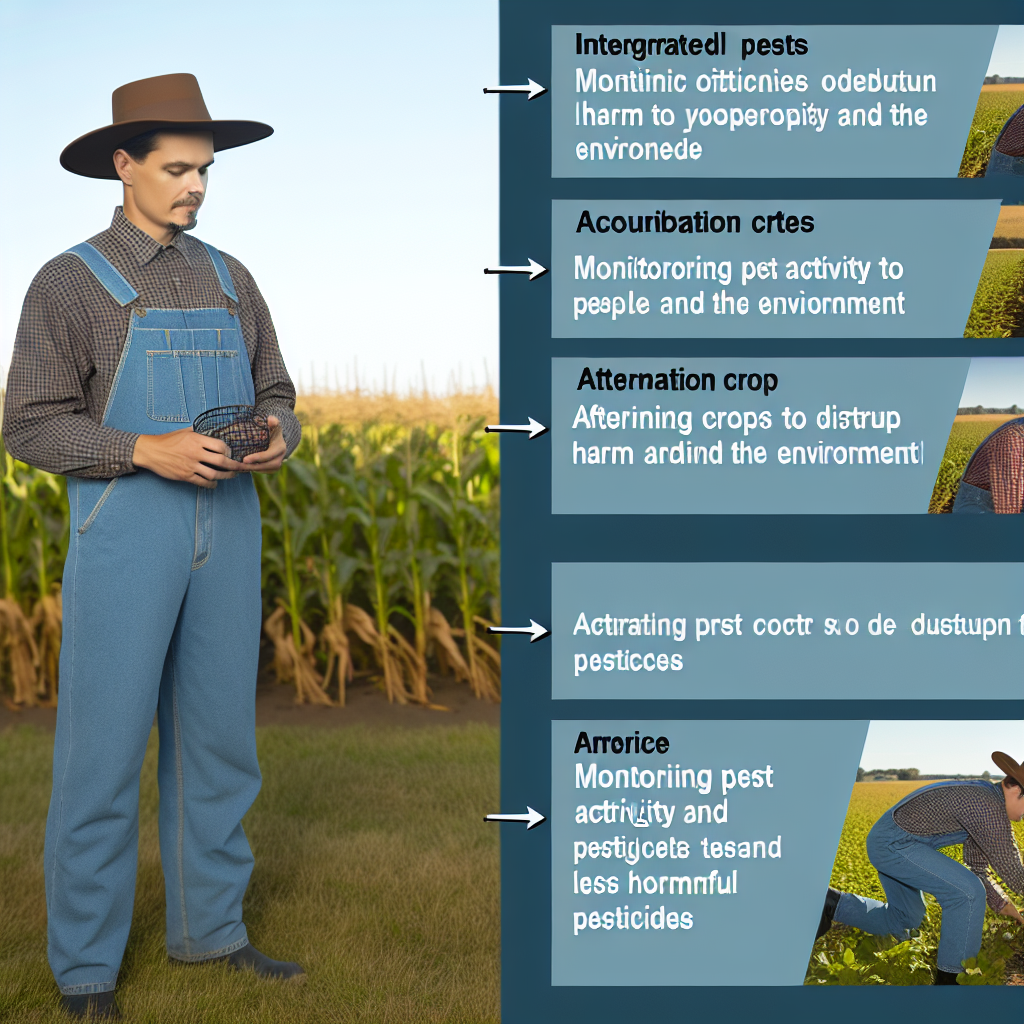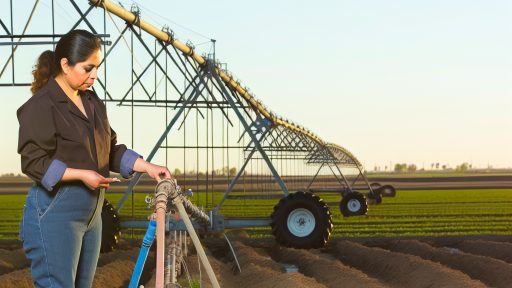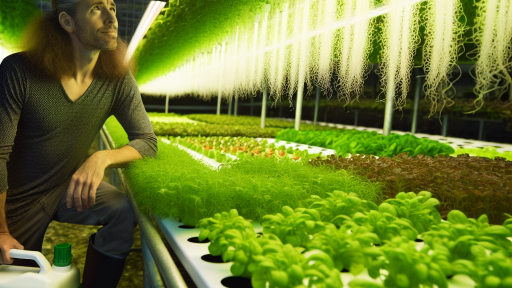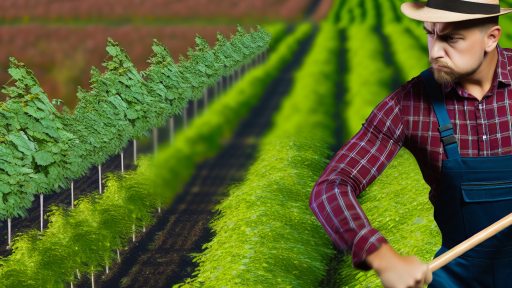Introduction to Integrated Pest Management in Organic Farming
Integrated Pest Management, or IPM, plays a crucial role in organic farming.
This holistic approach combines various strategies to control pests effectively.
Farmers utilize biological, cultural, and physical methods alongside minimal pesticide use.
The main goal is to reduce pest populations while maintaining ecological balance.
The Importance of IPM in Organic Agriculture
IPM enhances sustainability in agricultural practices.
It reduces reliance on synthetic chemicals, promoting environmental health.
This method supports biodiversity by encouraging natural pest predators.
Furthermore, it helps farmers meet organic certification standards.
Core Principles of IPM
IPM emphasizes prevention over intervention.
Monitoring pest populations is essential to understanding their life cycles.
Identification of specific pests allows for targeted management strategies.
Integrating diverse pest control methods reduces the chances of resistance.
Biological Control
Biological control utilizes natural predators to manage pest populations.
For instance, ladybugs can control aphid numbers effectively.
Farmers may introduce beneficial insects or encourage their presence.
Transform Your Agribusiness
Unlock your farm's potential with expert advice tailored to your needs. Get actionable steps that drive real results.
Get StartedCultural Control
Cultural control practices modify the environment to deter pests.
Crop rotation disrupts pest life cycles and minimizes outbreaks.
Planting pest-resistant varieties also contributes to cultural control.
Physical Control
Physical control methods include barriers and traps to protect crops.
Row covers can prevent pests from reaching plants.
Sticky traps capture flying insects, providing monitoring data.
Monitoring and Assessment
Regular monitoring is vital for successful IPM implementation.
Categorizing pests helps in deciding on appropriate control measures.
Farmers can use traps and visual inspections for effective assessment.
Additionally, record-keeping aids in understanding pest trends over time.
Implementing IPM in Organic Farming
Farmers should tailor IPM strategies to their specific crops and environments.
Education on local pest issues is essential for effective management.
Collaboration with agricultural experts strengthens IPM practices.
Ultimately, IPM fosters resilient farming systems.
Principles of Integrated Pest Management
Prevention Strategies
Prevention is the first line of defense in integrated pest management.
Healthy soil promotes robust plant growth.
Implement crop rotation to disrupt pest life cycles.
Choose pest-resistant plant varieties whenever possible.
Establish physical barriers to prevent pest access.
Encourage beneficial insects that prey on pests.
Monitoring Techniques
Monitoring allows farmers to identify pest problems early.
Regularly inspect crops to assess pest populations.
Use traps to monitor specific pests effectively.
Record observations systematically to track trends over time.
Showcase Your Farming Business
Publish your professional farming services profile on our blog for a one-time fee of $200 and reach a dedicated audience of farmers and agribusiness owners.
Publish Your ProfileEmploy scouting techniques to evaluate crop health.
Control Strategies
Control strategies vary depending on pest levels and types.
It is essential to use least-toxic options first.
Biological control includes introducing natural predators.
Cultural strategies involve altering farming practices.
Apply organic pesticides when necessary and as a last resort.
Integrated Approach
Always combine different strategies for optimal results.
This integrated approach reduces the reliance on chemicals.
Farmers can achieve sustainability in pest management.
Education and training are crucial for successful implementation.
Community collaboration enhances overall effectiveness.
Common Pests in Organic Farming: Identification and Lifecycle
Overview of Common Pests
Organic farming faces numerous pest challenges.
Identifying these pests is crucial for effective management.
Farmers must understand pest lifecycles to mitigate damage.
Types of Common Pests
Many pests impact organic farms.
- Aphids are small sap-sucking insects.
- Colorado potato beetles feed on potato leaves.
- Whiteflies are tiny, winged insects that damage crops.
Identifying each pest helps in implementing management strategies.
Life Cycle of Common Pests
Understanding a pest’s life cycle enhances control techniques.
Aphids reproduce quickly, leading to large populations.
They undergo a simple life cycle, transitioning from nymph to adult.
Similarly, Colorado potato beetles have a distinct life cycle.
They lay eggs on the undersides of leaves, which hatch into larvae.
This cycle can repeatedly damage crops each growing season.
Whiteflies also have a simple life cycle, transitioning through eggs, nymphs, and adults.
A rapid development time increases their population size quickly.
Signs of Pest Infestation
Identifying signs of infestation is essential for intervention.
Aphids often cluster on new growth, causing curling leaves.
Colorado potato beetle damage appears as skeletonized leaves.
Whiteflies may leave a sticky residue on plants, known as honeydew.
Effective Management Strategies
Implementing integrated pest management promotes sustainable practices.
Biological controls can include beneficial insects like ladybugs.
Cultural practices, such as crop rotation, can disrupt pest lifecycles.
Moreover, monitoring pest populations can aid in timing interventions.
Regular scouting helps identify emerging problems early.
You Might Also Like: Implementing Crop Diversity for Sustainable Farming
Cultural Practices to Minimize Pest Impact in Organic Systems
Crop Rotation
Crop rotation is vital for managing pests in organic farming.
This practice disrupts pest life cycles effectively.
By alternating crops, farmers reduce pest populations in the soil.
Additionally, rotating crops enhances soil health and fertility.
Intercropping
Intercropping involves growing multiple crops together.
This strategy fosters biodiversity and can confuse pests.
Showcase Your Farming Business
Publish your professional farming services profile on our blog for a one-time fee of $200 and reach a dedicated audience of farmers and agribusiness owners.
Publish Your ProfileFor instance, planting beans alongside corn can deter specific pests.
Moreover, it utilizes space efficiently and maximizes yields.
Proper Timing of Planting
Planting at optimal times boosts crop resilience against pests.
This method ensures crops are less vulnerable during peak pest seasons.
Farmers can monitor local pest activity to time their planting.
Consequently, aligned planting schedules can prevent severe infestations.
Soil Health Management
Maintaining healthy soil supports strong, resilient plants.
Organic matter enriches the soil, encouraging beneficial organisms.
These organisms can help outcompete harmful pests and diseases.
Furthermore, testing soil regularly aids in managing nutrient levels.
Physical Barriers
Using physical barriers can effectively protect crops from pests.
Row covers, nets, and hoops create a protective environment.
These barriers exclude harmful insects while allowing sunlight and rain.
Additionally, placing traps can monitor and control pest populations directly.
Companion Planting
Companion planting pairs plants that benefit each other.
Certain plants repel pests while attracting beneficial insects.
For instance, marigolds planted near vegetables deter unwanted pests.
This technique supports a balanced ecosystem in fields.
Regular Monitoring
Regular monitoring of crops is essential in organic farming.
Farmers should inspect plants frequently for signs of pests.
Early detection allows for timely interventions and control measures.
This proactive approach is key to minimizing pest damage effectively.
You Might Also Like: Conservation Tillage Strategies For Crop Success
Biological Control Agents: Utilizing Natural Predators and Parasites
Introduction to Biological Control
Biological control introduces natural enemies into the pest population.
This method leverages the natural predation and parasitism processes.
Farmers can reduce dependence on synthetic pesticides through this technique.
Types of Biological Control Agents
Natural predators include insects, birds, and mammals.
For example, ladybugs consume aphids effectively.
On the other hand, parasites can weaken pest populations over time.
Parasitic wasps, for instance, lay eggs inside pest hosts.
These diverse agents provide sustainable pest management solutions.
Benefits of Using Biological Control
This strategy decreases chemical residues on crops.
As a result, it promotes healthier ecosystems.
Moreover, biological control reduces the likelihood of pest resistance.
Farmers can experience cost savings in the long run.
Implementing Biological Control in Organic Farming
Farmers should assess their pest problems before selecting control agents.
Next, they must identify suitable biological control agents for their needs.
Introducing predators or parasites requires careful timing and monitoring.
Regular observation ensures optimal results and adjustments.
Case Studies of Successful Implementation
Many farms have adopted biological control successfully.
Showcase Your Farming Business
Publish your professional farming services profile on our blog for a one-time fee of $200 and reach a dedicated audience of farmers and agribusiness owners.
Publish Your ProfileFor example, Green Acres Organic Farm implemented ladybugs to manage aphids.
As a result, their crop yields increased significantly without chemicals.
Similarly, Harmony Fields utilized parasitic wasps, leading to pest population decline.
Considerations and Challenges
Biological control is not without its challenges.
Farmers must ensure the compatibility of introduced agents with local ecology.
Additionally, some pests may have natural predators that are less effective.
Continuous education and research can aid farmers in overcoming these challenges.
Learn More: Enhancing Farm Efficiency with Waste Management
Chemical Options for Organic Farming
Understanding Organic Pesticides
Organic pesticides are derived from natural sources.
They offer a more environmentally friendly alternative to synthetic chemicals.
Farmers use these pesticides to manage pest populations effectively.
Many organic pesticides are biodegradable and less harmful to non-target species.
Types of Organic Pesticides
Organic pesticides fall into several categories.
- Botanical insecticides incorporate plant extracts.
- Microbial pesticides use microorganisms to target pests.
- Mineral-based pesticides consist of naturally occurring minerals.
- Plant oils and soaps also act as effective organic pest control options.
Application Techniques
Proper application techniques enhance the effectiveness of organic pesticides.
Farmers should conduct regular monitoring of pest populations.
Apply organic pesticides when pest levels exceed the economic threshold.
Additionally, consider environmental factors such as temperature and humidity.
Using integrated methods will improve overall pest control strategies.
Benefits of Using Organic Pesticides
Organic pesticides help maintain ecological balance on the farm.
They reduce the risk of chemical residues in food products.
Furthermore, they often pose lower toxicity to beneficial insects.
The use of organic pesticides supports sustainable agricultural practices.
Challenges in Organic Pest Management
Organic pesticides may have limitations compared to their synthetic counterparts.
The effectiveness of organic options can vary based on the pest species.
Farmers may face difficulties in controlling severe infestations.
Additionally, acquiring certain organic products may present a challenge.
Learn More: Crop Rotation Methods to Enhance Farm Sustainability

Monitoring and Assessment Techniques for Pest Populations
Introduction to Pest Monitoring
Pest monitoring is crucial for effective pest management in organic farming.
This technique helps farmers identify pests before they cause significant damage.
Moreover, timely identification allows for the implementation of appropriate control measures.
Observation and Scouting Methods
Regular field scouting can yield valuable information about pest populations.
Farmers can visually inspect plants for signs of pest activity.
Additionally, they can use sticky traps to monitor pest numbers effectively.
By employing a systematic approach, farmers can better track changes over time.
Visual Inspection Techniques
Visual inspections should occur at regular intervals throughout the growing season.
Farmers must focus on the undersides of leaves, where pests often hide.
Equipment like hand lenses can enhance detail in pest identification.
Marking infested areas helps track pest population growth accurately.
Trap Monitoring Strategies
Using traps can provide quantitative data on pest populations.
Light traps attract and capture certain insect pests effectively.
Showcase Your Farming Business
Publish your professional farming services profile on our blog for a one-time fee of $200 and reach a dedicated audience of farmers and agribusiness owners.
Publish Your ProfileSticky traps can indicate the presence and approximate population density.
Regularly checking and documenting trap catches is essential for effective management.
Data Collection and Analysis
Collecting data on pest populations leads to better-informed decisions.
Farmers should record the type and number of pests observed during inspections.
Additionally, maintaining a pest management log can help identify trends and patterns.
Using Technology in Data Collection
Innovative technologies offer new methods for monitoring pest populations.
Mobile applications can assist farmers in logging pest data conveniently.
Furthermore, drones equipped with cameras can survey large fields for pests.
Thresholds and Action Levels
Establishing action thresholds is vital for pest management decisions.
These thresholds help determine when intervention is necessary.
Farmers should consider both economic and ecological factors when setting these levels.
Guidelines for Determining Action Thresholds
Identify the pest species and understand its damaging potential.
Evaluate the crop’s value and the market conditions.
Moreover, assess the natural enemies of the pest in the ecosystem.
Integrating Monitoring with Pest Management
Effective pest management requires integrating monitoring with control strategies.
Farmers should use the data collected to inform their management choices.
Such integration helps in selecting the most suitable control measures.
Ultimately, this approach fosters sustainable and ecological farming practices.
Successful Case Studies of IPM Implementation in Organic Farms
Case Study: Willow Creek Farm
Willow Creek Farm successfully implemented IPM strategies to combat pest issues.
They monitored pest populations using traps and visual inspections.
By analyzing this data, they identified peak pest activity periods.
Next, they introduced beneficial insects, such as ladybugs and lacewings.
This natural predator approach reduced aphid populations significantly.
In addition, they used neem oil sprays to manage pest outbreaks.
These methods resulted in a 40% reduction in pesticide use.
Consequently, Willow Creek Farm reported higher crop yields and healthier soil.
Case Study: Green Valley Organics
Green Valley Organics also adopted an IPM approach with remarkable success.
They began by identifying their most prevalent pests.
Regular inspections allowed them to track pest life cycles effectively.
They focused on cultural practices, including crop rotation and cover cropping.
These methods enhanced soil health and disrupted pest cycles.
Furthermore, they employed organic insecticides when necessary.
As a result, Green Valley achieved a 30% increase in overall harvest quality.
They have since become a model for local organic farmers.
Case Study: Sunny Fields Farm
Sunny Fields Farm showcases the importance of farmer collaboration in IPM.
They partnered with local agronomists and extension services for support.
Through workshops, farmers shared their pest management experiences.
One pivotal strategy was creating habitat for beneficial insects.
They planted wildflower strips to attract pollinators and predators.
Notably, this practice increased the presence of natural pest controllers.
Showcase Your Farming Business
Publish your professional farming services profile on our blog for a one-time fee of $200 and reach a dedicated audience of farmers and agribusiness owners.
Publish Your ProfileSunny Fields reported a 50% reduction in pest-related damages.
Moreover, the farm achieved sustainability goals while boosting community relations.
Case Study: Harvest Moon Farm
Harvest Moon Farm adopted precision agriculture techniques for pest management.
They employed technology to monitor crops and pest activity.
Using drones, they gathered data on plant health and pest infestations.
This information enabled timely interventions and precise applications.
By targeting specific areas, they minimized chemical use significantly.
Moreover, Harvest Moon fostered relationships with local universities for research.
As a consequence, they developed new, environmentally friendly pest control methods.
Overall, this case highlights the synergy between technology and sustainability.
Challenges and Limitations of IPM in Organic Agriculture
Understanding IPM Limitations
Integrated Pest Management (IPM) faces unique challenges in organic agriculture.
Organic farmers prioritize natural methods, but pest control options remain limited.
Furthermore, some pests develop resistance over time to organic control methods.
Resource Limitations
Many organic farmers struggle with limited financial resources.
This limitation affects their ability to implement advanced IPM strategies.
Additionally, access to research and information on effective practices is often scarce.
Knowledge and Training Gaps
Farmers may lack the necessary training in IPM techniques.
Many agricultural education programs do not fully cover organic pest management.
Consequently, farmers may resort to ineffective pest control practices.
Market Constraints
The market demands organic products but often at competitive prices.
Many organic producers struggle to balance pest control with profit margins.
This economic pressure can lead to simplification of pest management approaches.
Pest Biology and Ecology
Pest life cycles and behaviors can complicate management efforts.
Different pests require unique strategies, challenging the uniform application of IPM.
Moreover, environmental conditions can greatly affect pest populations and behavior.
Regulatory Challenges
Compliance with organic certification standards adds complexity to IPM implementation.
Farmers must navigate a web of regulations that limit their management options.
This can lead to frustration and discourage effective pest management practices.
Community and Outreach Needs
Effective IPM requires community engagement and collaboration among farmers.
However, many farmers operate in isolation, missing valuable support networks.
Networking can foster knowledge sharing and help address common pest challenges.
Future Directions: Innovations in IPM for Enhanced Sustainable Farming
Emerging Technologies in IPM
Advancements in technology redefine integrated pest management (IPM).
Drones facilitate efficient monitoring of crops.
Remote sensing technology identifies pest outbreaks quickly.
Furthermore, artificial intelligence predicts pest behavior precisely.
Biological Control Methods
Increasing interest surrounds biological control methods.
This approach utilizes natural predators to manage pests.
For instance, ladybugs control aphid populations effectively.
Additionally, nematodes target soil-dwelling pest larvae.
Reduced Chemical Use
Farmers aim to minimize chemical pesticide usage.
Showcase Your Farming Business
Publish your professional farming services profile on our blog for a one-time fee of $200 and reach a dedicated audience of farmers and agribusiness owners.
Publish Your ProfileThey integrate botanical pesticides as safer alternatives.
Moreover, these options support ecosystem health.
Organic farming practices are gaining traction in this area.
Community Collaboration
Local farmer groups promote knowledge sharing.
They organize workshops on sustainable pest management strategies.
Networking amplifies resources and support for farmers.
This collaboration enhances problem-solving in pest management.
Education and Training
Investing in education builds a stronger future for farmers.
Research institutions collaborate with agricultural educators.
They develop training programs on IPM practices.
Knowledgeable farmers implement effective IPM strategies.
Additional Resources
Sustainable Agriculture Programs | NIFA
Choice of insect management portfolios by organic farmers: lessons …




